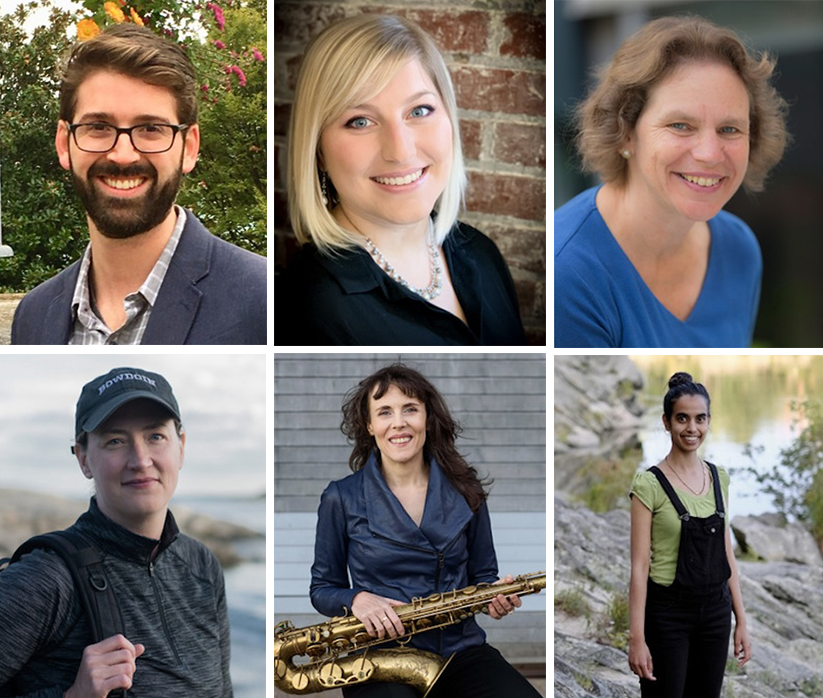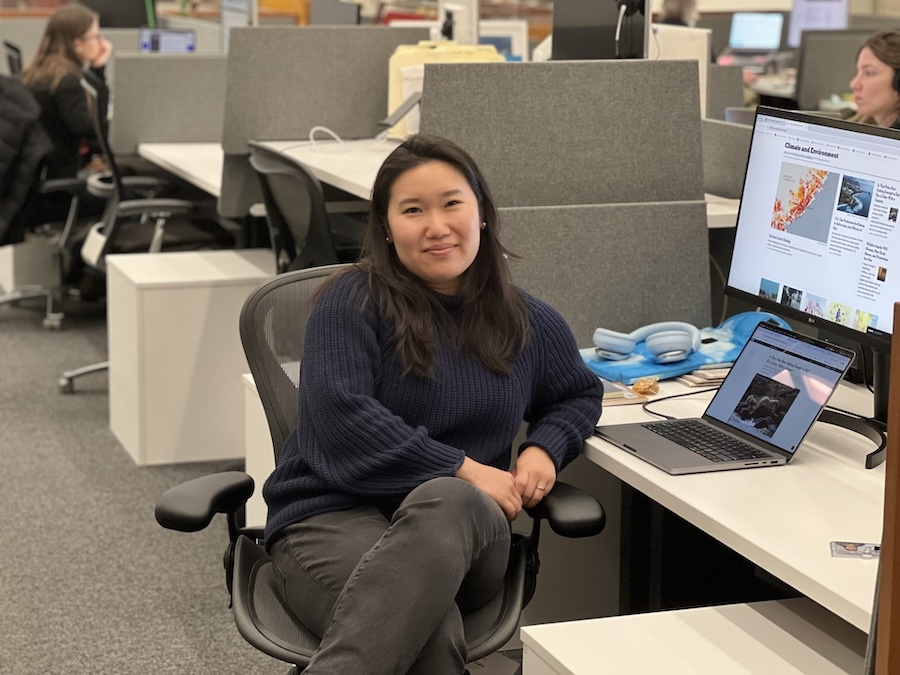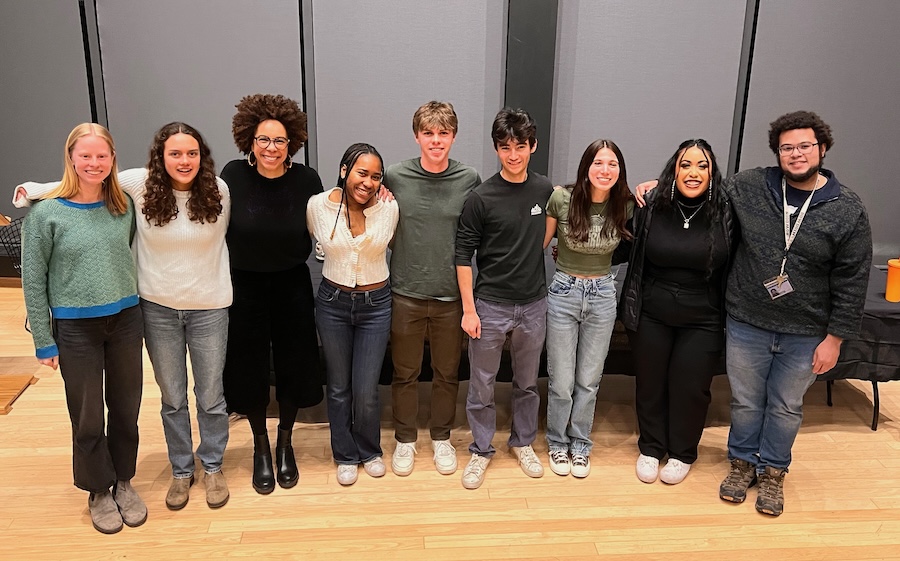Prof. LaVigne and Students Decipher How Past Oceans Responded to Climate Change
By Rebecca Goldfine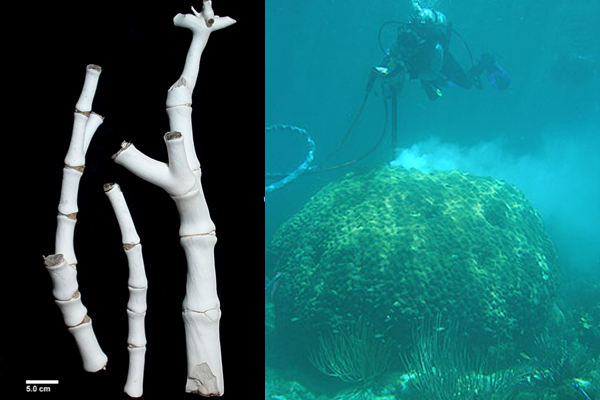
As she analyzes long-lived corals culled from the ocean depths, paleoceanographer Michèle LaVigne can read the history of the ocean and learn about its past interactions with the climate. Scientists like her who are researching historical ocean processes can even see in some corals the evidence of nuclear bomb tests in the 1950s. These explosions changed the composition of carbon in the atmosphere globally.
Corals are reliable record keepers because as they grow and build skeletons of calcium carbonate, they build up bands, much like trees. Paleoceanographers can perform chemical analyses on the skeletons to glean what was happening in the ocean decades, even centuries ago. “As they lay down bands over time, corals are continually recording the geochemistry of the water around them,” LaVigne said. Changes in the corals can reveal past conditions like water temperature, salinity and nutrient concentrations.
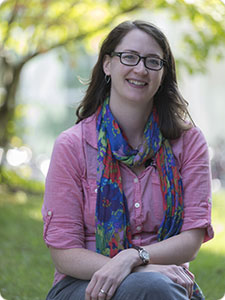 To support her study of a specific type of coral that grows in the deep sea, LaVigne, an assistant professor of earth and oceanographic science, was recently awarded a National Science Foundation grant. She is focusing on bamboo corals collected from the West Coast of the United States. These corals, which look similar to bamboo shoots, grow radially and live at ocean depths from a couple hundred meters to several thousand meters.
To support her study of a specific type of coral that grows in the deep sea, LaVigne, an assistant professor of earth and oceanographic science, was recently awarded a National Science Foundation grant. She is focusing on bamboo corals collected from the West Coast of the United States. These corals, which look similar to bamboo shoots, grow radially and live at ocean depths from a couple hundred meters to several thousand meters.
LaVigne is studying coral samples that range in age from 70 years old to 500 or 600 years old. “Some geologists would say looking back decades and centuries is not a long time,” she said, “but through these coral records we can look at more rapid changes in climate than we could with other geological records.” Climate patterns such as the cyclical El Niño Southern Oscillation and the Pacific Decadal Oscillation can be preserved in the coral records. These corals can also be used to investigate differences in ocean conditions before and after human industrialization began to change the climate.
LaVigne’s NSF grant funded two Bowdoin undergraduate assistants this summer — Hannah Miller ’17 and Meg Freiberger ’16. The two earth and oceanographic science majors helped LaVigne confirm the interactions between deep-sea corals and events at the ocean surface.
“Previously researchers thought that the deep or intermediate oceans were somewhat separated from very rapid changes in climate and surface ocean-atmospheric interactions,” LaVigne said. “We know there are is rapid changes in climate from year to year and month to month that affect the surface ocean, but the deep sea was thought to be more isolated. Recently, researchers have started to realize that’s not the case, and our data are showing that as well.”
The grant, NSF Award Number OCE-1420984, enabled LaVigne to provide Miller and Freiberger with the opportunity to work in a large research lab this summer. The students traveled frequently to the Woods Hole Oceanographic Institution in Massachusetts to perform radiocarbon dating and analyses of the coral samples. They were focused on the nodes of the bamboo coral, which are essentially the organism’s joints that give it flexibility in the water. As they grow, the nodes acquire carbon from a different source than the rest of the coral skeleton, which takes up inorganic carbon from surrounding water. “Nodes, instead, get their carbon from a source that originates at the surface of the ocean, from particles that are made up of decaying marine plants and other plankton,” LaVigne explained. These particles aggregate, decay and sink through the water column. “So you have these paired surface-and-sea signals,” she added.
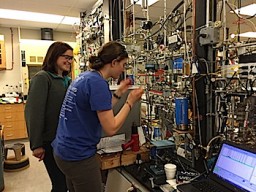 This summer, students researchers Hannah Miller ’17 and Meg Freiberger ’16 developed, with help from scientists at the Woods Hole Oceanographic Institute, a new rapid method to analyze bamboo coral’s organic nodes. “They came up with the most beautiful high-resolution radiocarbon data I’ve ever seen for deep sea corals,” Michèle LaVigne said. “They led the way for organizing [the new method], and came up with nice data.” Read more about Freiberger, who received a Clare Booth Luce fellowship to support her research.
This summer, students researchers Hannah Miller ’17 and Meg Freiberger ’16 developed, with help from scientists at the Woods Hole Oceanographic Institute, a new rapid method to analyze bamboo coral’s organic nodes. “They came up with the most beautiful high-resolution radiocarbon data I’ve ever seen for deep sea corals,” Michèle LaVigne said. “They led the way for organizing [the new method], and came up with nice data.” Read more about Freiberger, who received a Clare Booth Luce fellowship to support her research.

